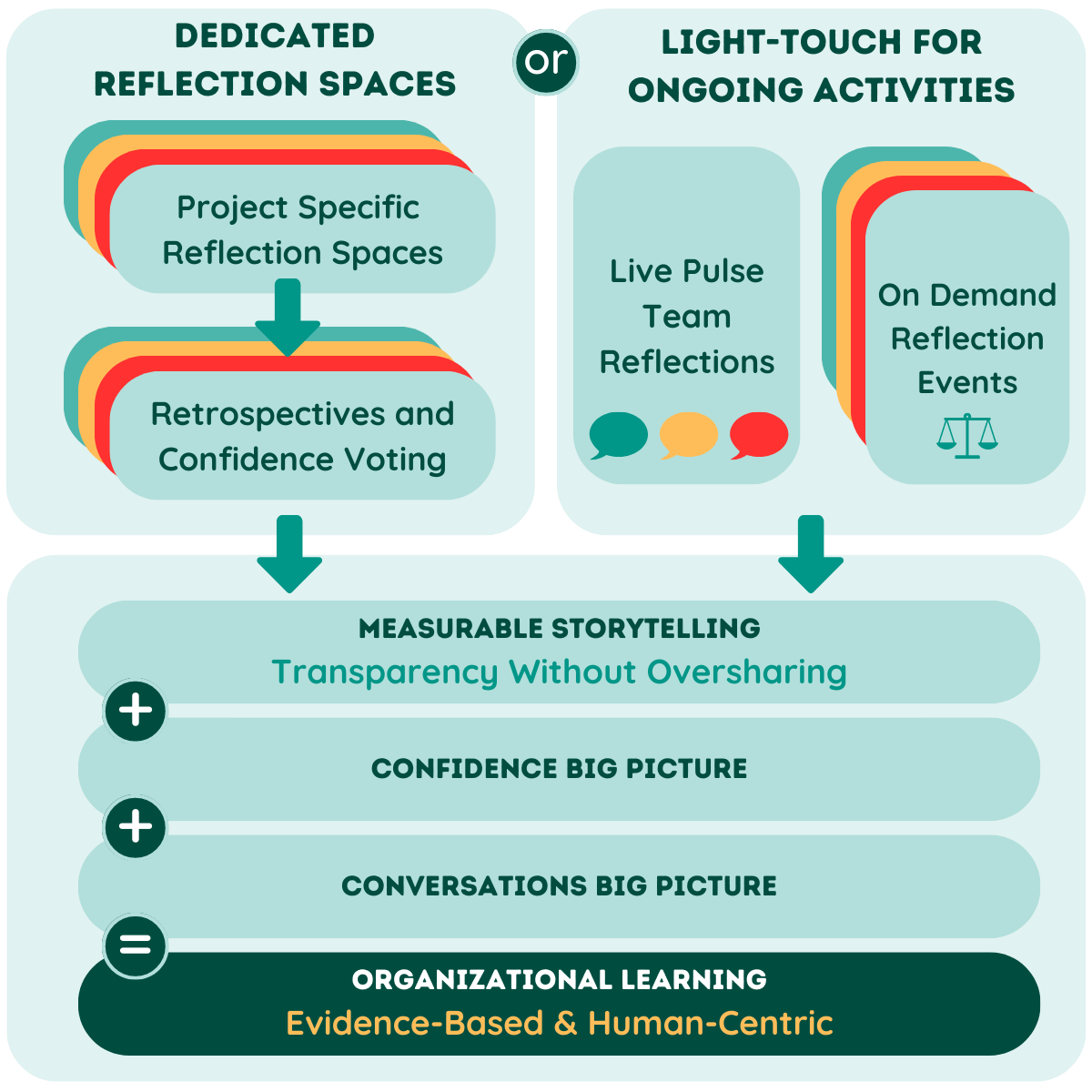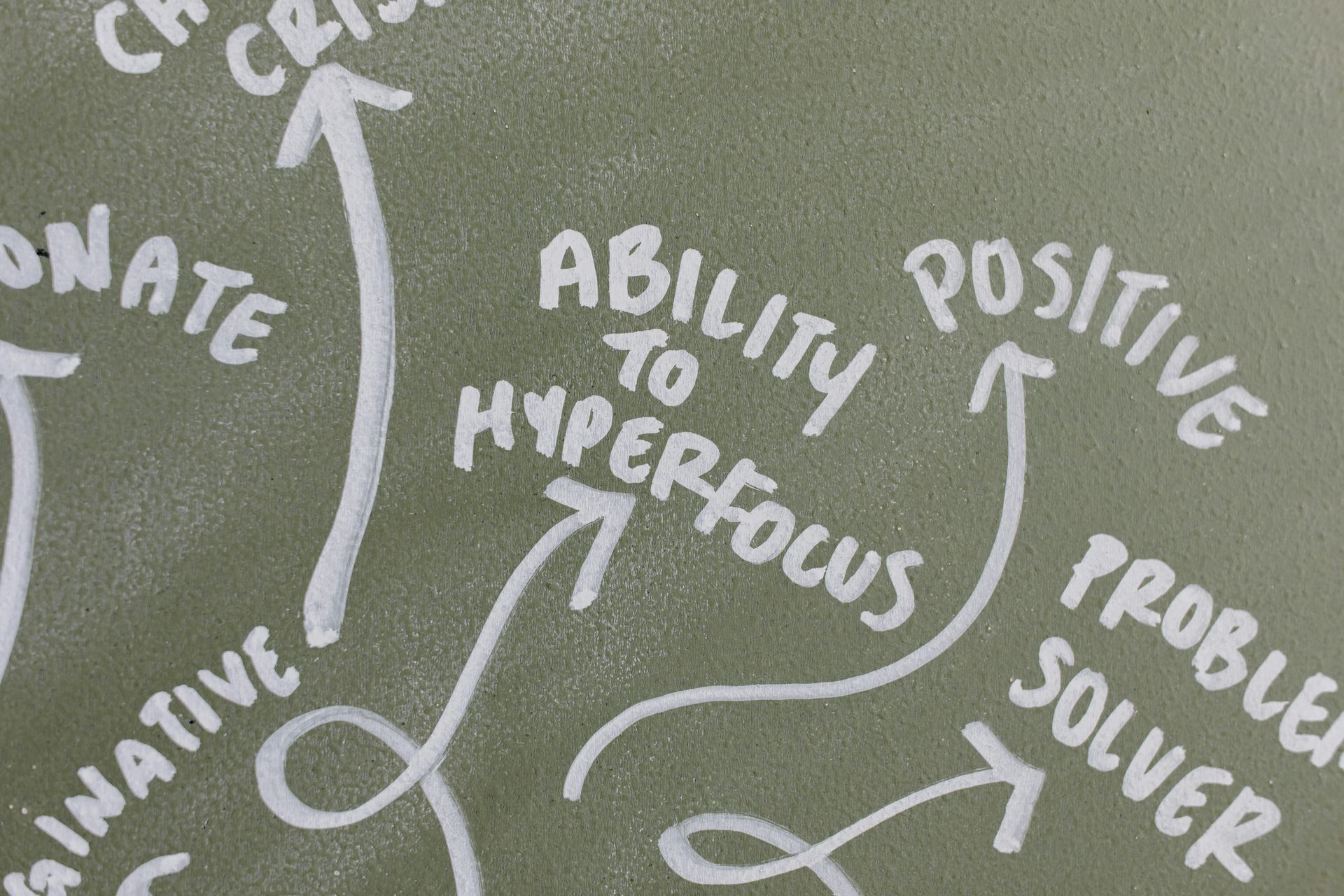Embracing Smart Transparency: A Systems Thinking Approach
Introduction
In today's rapidly evolving world, the workplace has become an intricate web of interconnected processes, decisions, and collaborations. Perhaps, it has always been this way. However, the complexity is higher in today's environment due to the distributed nature of teams and engagements with external partners, as well as challenges in shaping team culture within a somewhat transient workforce.
It is easy to fall into the trap of transactional relationships when organizations regiment the approach to information flow, employee engagement, and knowledge development. Despite the investment into surveys and well meaning management communication plans, good intentions are often capped within some form of a “survey trap” that focuses on subjective proof of performance as opposed to a proof of value.
While it is popular to talk about transparency and building a great culture, how do you measure if enough is being done in your organization? Relying on one-to-one conversations with key employees is neither fool-proof nor scalable. Similarly, survey related methods are associated with latency of information and confirmation bias.
This article, the second in this series, examines practical approaches to building effective and smart transparency. In the
first article, we considered the topic of creating an environment of authentic psychological safety. The proposed solution was in the form of distributed and confidential reflection spaces that could channel measurable and contextual data points into a common systems thinking picture of what is truly going on.
How to Introduce Transparency Concept
Transparency breeds inclusivity and trust in the workplace. It must be nurtured everyday at work, at every level. Introducing transparency should be done in stages; the steps outlined below are from a real world example. Feel free to re-use and adapt them per your context.
Step 1 : Explain the concept to executives and grassroots
Here is an example of a communique or a wiki you can create as part of facilitating the conversation and educating your teams about what transparency means in real terms.
Everything we do in {YOUR ORGANIZATION} is for the purpose of achieving better {OUTCOMES AND SUCCESS MEASURE}. Our knowledge base is a result of learnings; it represents organizational intelligence based on experiential data collated over a period of time.
Your day-to-day experiences and observations are “information” (data points and feelings). A well functioning system of Transparency will convert this “information” into a reusable “knowledge base”. Transparency can help evolve the organization and our culture. As such, the discipline of transparency needs to be introduced as a gentle rain versus a hailstorm. Smart Transparency is about being mindful about the delivery and expression of the experience as measurable and contextual data points. The intent is to create unavoidable conversation triggers that result in positive change.
The flow and principles for cultivating smart transparency and creating an intelligent knowledge base are as follows:

- Information you possess
- We create a safe environment within our organization where people feel safe to bubble up data points
- People are invited to push measurable and contextual reflections directly from Slack or MS Teams into a higher level team wide journal, or confidential spaces per team / project
- Psychological safety options exist for people to feel safe when pushing feedback
- All feedback is measurable and contextual, and therefore this flow is not a “complaints channel” but rather a feed into the systems thinking brain of your team
- The medium for your knowledge
- Business-as-usual task management task like information is captured in {YOUR BAU SYSTEM}; Examples
- Tasks in Jira for agile teams
- Tasks in Salesforce for CRM like activities
- etc.
- Feedback on challenges and wins is captured in Neelix; Examples
- Capture feedback within confidential spaces per team, with ability to aggregate measurable reflections across all spaces
- Capture feedback in a team-wide space if the wider team has already matured to accept transparency as the normal expectation
- The culture you create
- The combination of measurable and contextual reflections on experiences allows your teams to communicate more effectively with clients and internal stakeholders
- Evidence-based and real-time information flow enables the team to abort wasteful activities or change tack quickly when it is needed
- Experiential data points, truthful reflection and self-optimising continuous improvement initiatives result in a culture of mindfulness (a.k.a. The Systems Thinking mindset)
- Crowd-sourced and evidence-based data points assist with challenging the status quo, avoiding group think or individual biases
- Authenticity of leadership - caring about true experiences and the journey of teams
- Leaders of the organization taking into account the journey and authentic experience data points when developing strategy and the approach to winning hearts and minds of employees
- Leaders finding opportunities for engaging employees in strategy development
- Knowledge
- Bias-free, measurable, and context-aware experience data points result in an always-on measure of Team Morale - escape the survey trap and focus on proof of value
- Outputs of our culture and process improvement initiatives result in experiential IQ and an evidence-based knowledge base in the form of
- Reusable processes continuously refined through empirical evidence
- Reusable templates refined through continuous feedback
- Jointly agreed internal social contract/s
- Jointly agreed social contract with other teams
Step 2 : Educate and empower teams with the knowledge of when and how to push Live Pulse feedback
Consider which of the three “Transparency Without Oversharing” approaches suit your organization best; this was outlined in part one of this series on transparency:
- Small team or project ready for internal transparency
- Developing teams capable of individual introspection, but the wider ecosystem (company or large project) is not ready for transparency
- Mature organization with strong horizontal leadership and executives who actively promote transparency
As is the case with any change management initiative, you will need these ingredients:
- A leader who supports the concept of smart transparency and is willing to sponsor it
- A culture champion who can foster the introduction of transparency
- A candidate show-case team
To commence your transparency journey, the first two ingredients are mandatory.
The easiest way of introducing transparency is to empower team leads to push reflections on behalf of their teams once a week. Neelix provides rails for ensuring that these posts are contextual and measurable. As a result, the rest of your employees have a useful baseline as to how their experiences will be represented in the team's reflective journal, and how their journey is visualised for management.
The next step is to showcase this pattern and resulting data points in the team's journal to the rest of the team. After this introduction, configure periodic prompts to nudge people into the habit of sharing their experiences. Neelix provides functionality to configure custom prompts per channel in Slack or MS Teams. Feedback can be pushed at any time without awaiting for a prompt. The prompt helps with establishing a pattern. Research shows that best reflections are ones made "in the heat of the moment" because human brain mutates recollection of what really happened.
Life hack about managing confidentiality concerns:
- If your organisation needed separate, confidential reflection spaces per team, then channel-specific customised prompts issued by Neelix can also act as a guide in ensuring that people know what experience they push, where.

How to Get the Ball Rolling
It is important to coach people that it is normal for a journey towards transparency to be associated with breaking a few eggs on the way. The life hack that smoothes the journey is to constantly remember George Bernard Shaw’s quote - “If you want to tell people the truth, make them laugh”. Healthy humour at the workplace is an underappreciated skill (Humour at work | Andrew Tarvin | TEDxOhioStateUniversity).
Mindful, systems thinking culture is dependent on three considerations:
- “Good people can disagree” - Russell Pearce
- “The first principle is that you must not fool yourself and you are the easiest person to fool” - Richard P. Feynman
- There is no “I” in the word “team”
Neelix platform is a holistic approach to authentic employee engagement and provides a variety of tools besides the Live Pulse feedback flow.
Tools for periodic team conversations
- Retrospectives Conversations (per initiative, and scalable to global events)
- Confidence Votes
- Confidence and Conversations Big Picture Dashboards
- Moods Dashboard and Workplace Analytics
Tools for Alignment Between Individuals and Teams
- Team’s mirror tool
- Real-time Storytelling of your team’s or organization-wide journey based on authentic grassroots reflections
- Word cloud game
- Gamified experiences “leader” board
- Talent retention strength measuring
- Buddy system
- Get to know each other tool - self-driven peer review
If you need guidance,
contact us for a free webinar or consultation.
Conclusion
The journey towards Smart Transparency is not without challenges, but the potential rewards are far-reaching. Winning organizations embark on this transformational path, uncovering how the fusion of systems thinking and transparency can pave the way for a brighter future in the modern workplace. Don’t miss out on opportunities to beat the competition and create a culture that ensures strong talent retention.
Postscriptum
Transparency, mindfulness and systems thinking are ultimately about the culture. Human-centric approach and the necessary investment into relationship building will influence the degree of success. The most important ingredients, however, are the people. Organizations undertaking a transparency journey should also ensure they structure their talent management and internal coaching strategies in a way that ensures people meet your standards for transparency at work. The most complex part of any organization is people.



